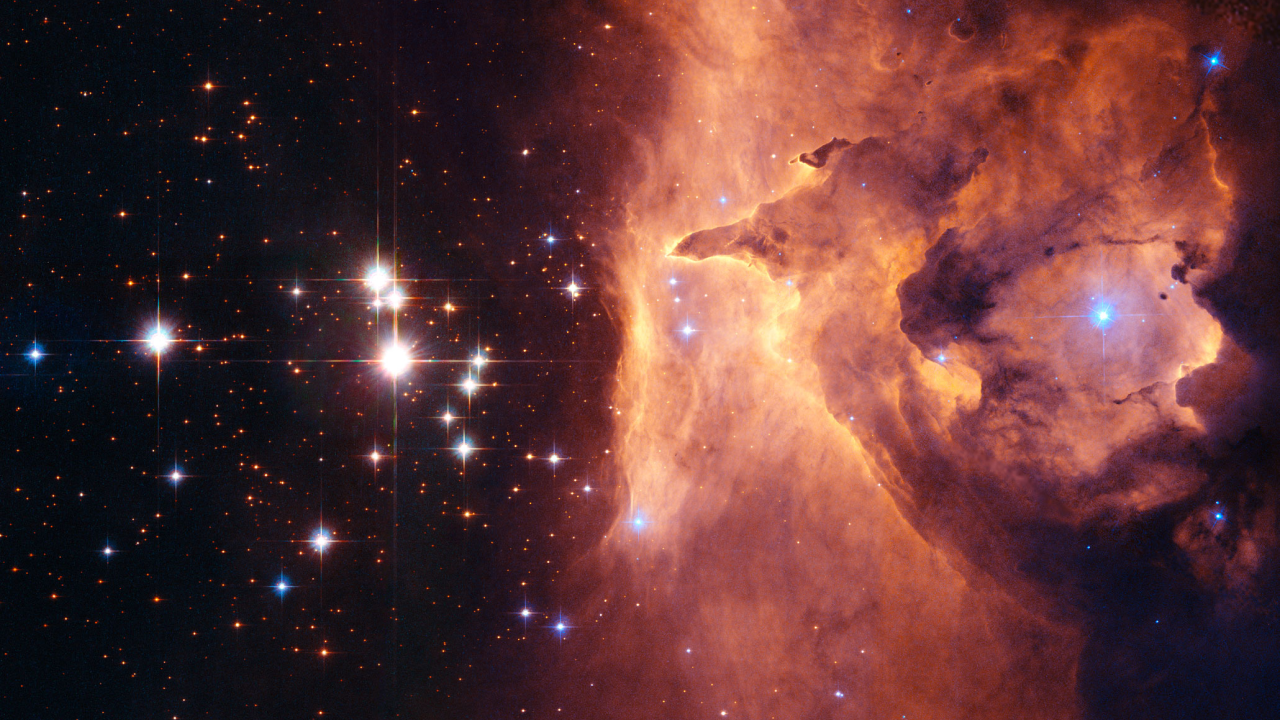Science
NASA Hubble Telescope Unveils 7 Stunning Star Cluster Images

NASA has released a collection of seven remarkable images showcasing star clusters captured by the Hubble Space Telescope. These stunning photographs reveal bright groups of stars, each presenting a unique perspective of the universe’s beauty and complexity beyond our own galaxy.
Mesmerizing Displays of Cosmic Beauty
One of the standout images features the star cluster known as NGC 1805. Located near a small galaxy close to the Milky Way, this tightly packed group of colorful stars showcases a dynamic environment. The close proximity of the stars makes it challenging for planets to form around them, resembling a swarm of bees in flight. This image highlights the intricate structures and luminous beauty of star formation.
Another captivating image captures NGC 1866, a massive star group held together by gravity. Found near the edge of the Large Magellanic Cloud, a nearby galaxy, this cluster was first discovered by Scottish astronomer James Dunlop in 1826. Hubble’s advanced imaging technology allows for an in-depth view of this stellar assembly, revealing the intricate interplay of light and gravity in space.
Active Star-Forming Regions
The Hubble Space Telescope has also documented the vibrant star formation area known as N11 in the Large Magellanic Cloud. This image, composed of five separate captures, highlights one of the most active star-forming regions near our galaxy. The colorful display of young stars and glowing gas clouds illustrates the dynamic processes of star creation, offering insights into the life cycles of stars.
Another intriguing depiction is of blue straggler stars, which are unusually bright and massive. These stars gradually migrate toward the center of their respective clusters, changing the dynamics of star populations over time. The Hubble’s ability to visualize these stars sheds light on their unique evolutionary paths.
The image showcasing a colorful nebula features thick clouds of gas and dust with a bright orange core. Here, a thin filament traverses the scene while streams of gas swirl outward. Bright blue stars shine prominently in the foreground, capturing the essence of cosmic beauty.
At the heart of the bright nebula NGC 6357, the star cluster Pismis 24 resides within the Scorpius constellation. This cluster is notable for its young, massive blue stars that emit strong ultraviolet light, heating surrounding gas and forming a glowing bubble. The thick gas clouds surrounding this area present challenges for clear observation, yet the Hubble’s capabilities allow for stunning imagery.
Lastly, an image depicting a globular cluster reveals a very dense assembly of stars tightly packed together. Some stars shine brightly, exhibiting cross-shaped spikes, while the core glows with a radiance that captivates the viewer. This image emphasizes the intricate beauty of star clusters and their formation.
These spectacular images, produced by the European Space Agency (ESA) and NASA, exemplify the incredible capabilities of the Hubble Space Telescope. They invite viewers to contemplate the vastness of the universe and our place within it, highlighting the ongoing exploration and understanding of cosmic phenomena.
-

 World5 months ago
World5 months agoSBI Announces QIP Floor Price at ₹811.05 Per Share
-

 Lifestyle5 months ago
Lifestyle5 months agoCept Unveils ₹3.1 Crore Urban Mobility Plan for Sustainable Growth
-

 Science4 months ago
Science4 months agoNew Blood Group Discovered in South Indian Woman at Rotary Centre
-

 World5 months ago
World5 months agoTorrential Rains Cause Flash Flooding in New York and New Jersey
-

 Top Stories5 months ago
Top Stories5 months agoKonkani Cultural Organisation to Host Pearl Jubilee in Abu Dhabi
-

 Sports4 months ago
Sports4 months agoBroad Advocates for Bowling Change Ahead of Final Test Against India
-

 Science5 months ago
Science5 months agoNothing Headphone 1 Review: A Bold Contender in Audio Design
-

 Top Stories5 months ago
Top Stories5 months agoAir India Crash Investigation Highlights Boeing Fuel Switch Concerns
-

 Business5 months ago
Business5 months agoIndian Stock Market Rebounds: Sensex and Nifty Rise After Four-Day Decline
-

 Sports4 months ago
Sports4 months agoCristian Totti Retires at 19: Pressure of Fame Takes Toll
-

 Politics5 months ago
Politics5 months agoAbandoned Doberman Finds New Home After Journey to Prague
-

 Top Stories5 months ago
Top Stories5 months agoPatna Bank Manager Abhishek Varun Found Dead in Well









